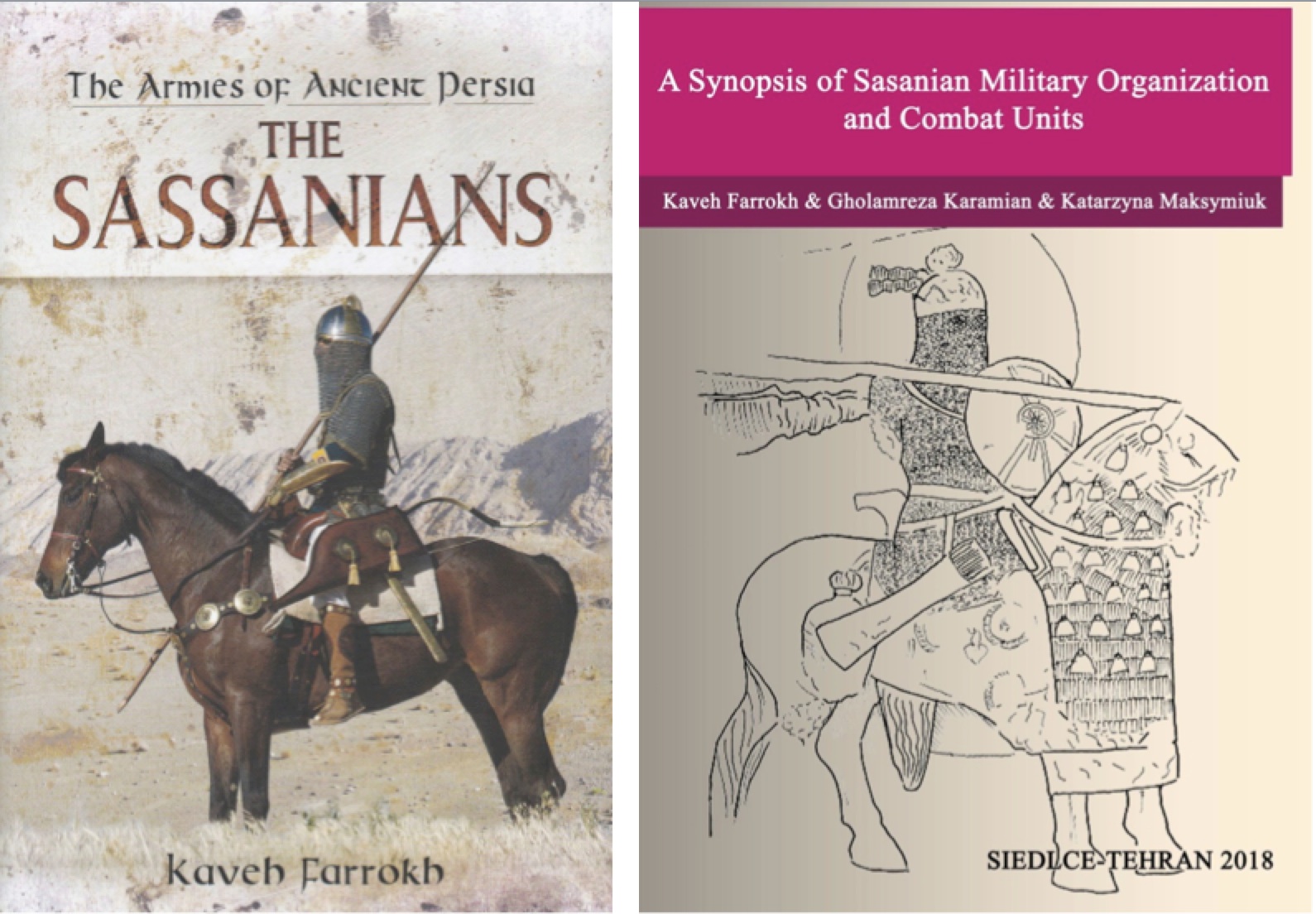As of May 20, 2018, Kaveh Farrokh has published six books on the military history of Iran/Persia
Kaveh Farrokh’s most recent two new books pertain to the armies of the Sassanians. One of these was co-authored with two scholars in 2018 [See in Academia.edu]:
A Synopsis of Sasanian Military Organization and Combat Units 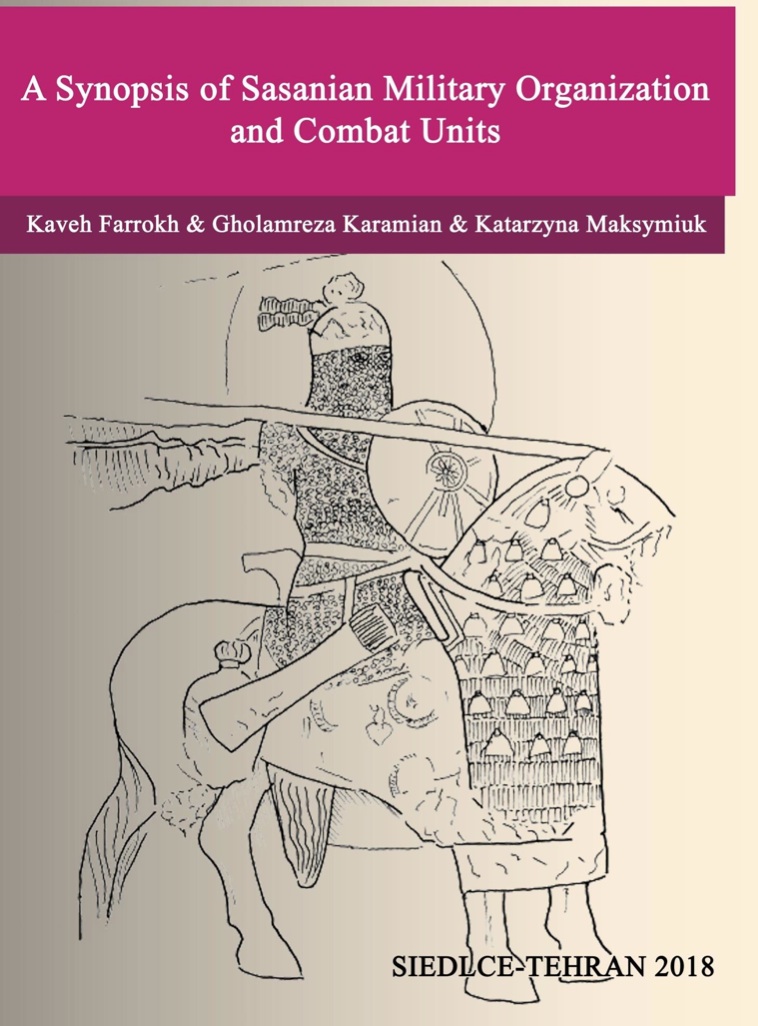
- Kaveh Farrokh
- Gholamreza Karamian (Department of Archaeology & History Central Tehran Branch, Tehran Azad University)
- Katarzyna Maksymiuk (Institute of History and International Relations, Faculty of Humanities, Siedlce University of Natural Sciences and Humanities, Poland)
The book was published by the Publishing House of Siedlce University of Natural Sciences and Humanities with the support of the Central Branch of Tehran Azad University.
The results of the research for the above textbook were conducted under the research theme No. 452/16/S (Army of ancient Iran in comparative background) and financed from the science grant granted by the Ministry of Science and Higher Education of Poland.
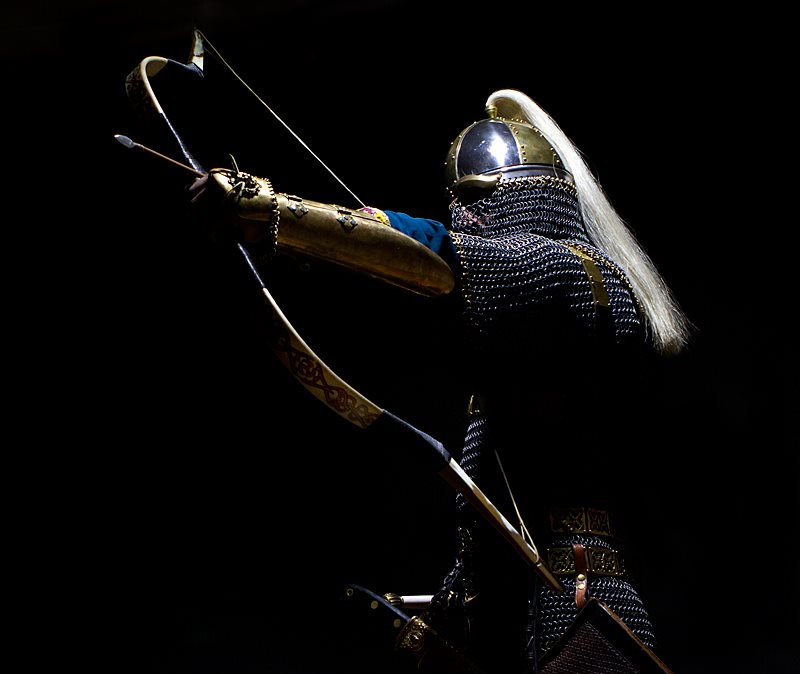
Savārān officer engaged in archery. Recreations by Ardashir Radpour (courtesy A. Radpour & H. Martin).
Note that Kaveh Farrokh’s co-authors (Prof. Gholamreza Karamian and Prof. Katarzyna Maksymiuk) are top scholars. While too numerous to list here, Prof. Maksymiuk is one of the world’s leading scholars of Partho-Sassanian military studies – readers are referred to her Academia.edu page here …
Note that the maps produced by Prof. Maksymiuk in her 2015 textbook [Geography of Roman-Iranian Wars. Military Operations of Rome and Sasanian Iran] have been reproduced in Farrokh’s 2017 textbook on the Sassanian army (discussed further below).
Prof. Karamian has conducted several critical excavations of Partho-Sassanian sites, which have been reported on Kaveh Farrokh, such as the palace of Ramavand, and has also been published in academic format:
Karamian’s discoveries of Parthian sites (with the assistance of his graduate students) of the sites of Andika in Khuzestan (in southwest Iran) and Panj-e Ali (in Luristan, western Iran) have also been academically published:
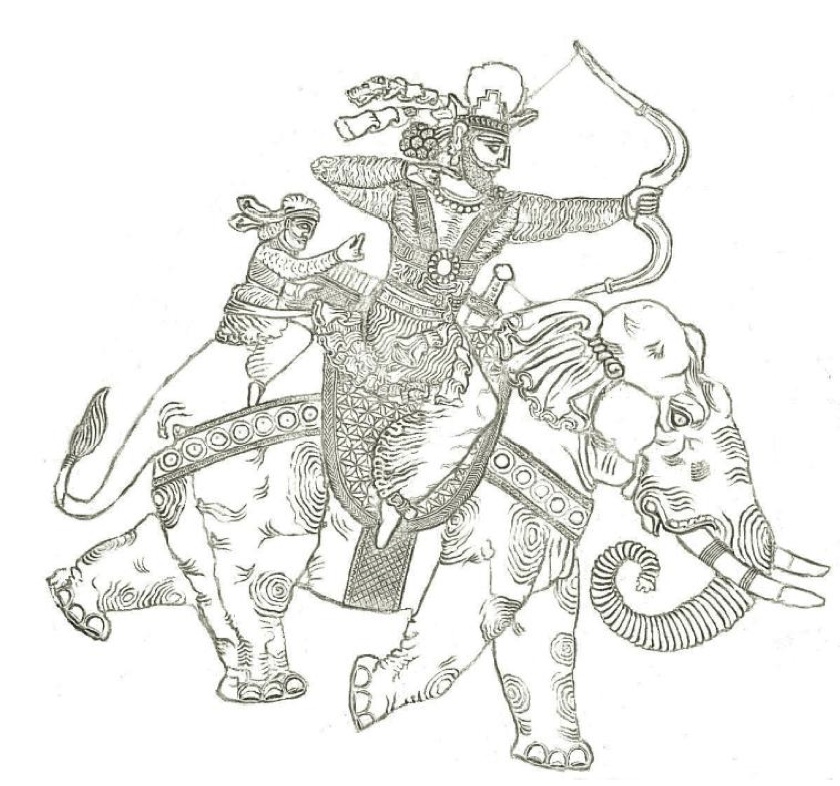
Plate Šāpūr II (r. 309-379) atop an Elephant (4th-7th centuries), Los Angeles County Museum of Art inv. no. M.76.174.18, (drawing by Prof. Katarzyna Maksymiuk).
Kaveh Farrokh’s second most recent textbook on the Sassanian military “Armies of Persia: the Sassanians” by Kaveh Farrokh was published in 2017 by Pen & Sword Publishing in England.
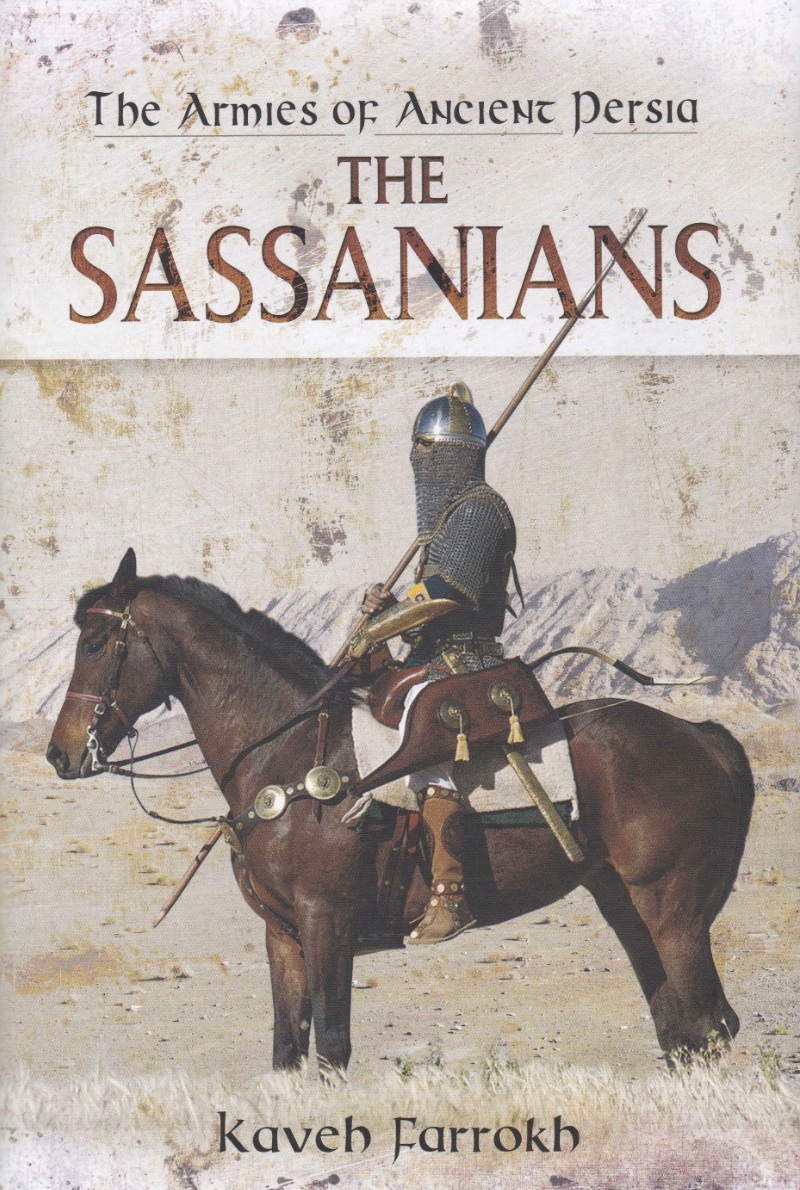
- Publisher: Pen and Sword (Oct. 17 2017)
- ISBN-10: 1848848455
- ISBN-13: 978-1848848450
- Hardcover: 256 pages
Available at:
- Pen & Sword: https://www.pen-and-sword.co.uk/Kaveh-Farrokh/a/2218
- Amazon.com: https://www.amazon.com/Armies-Ancient-Persia-Sassanians/dp/1848848455
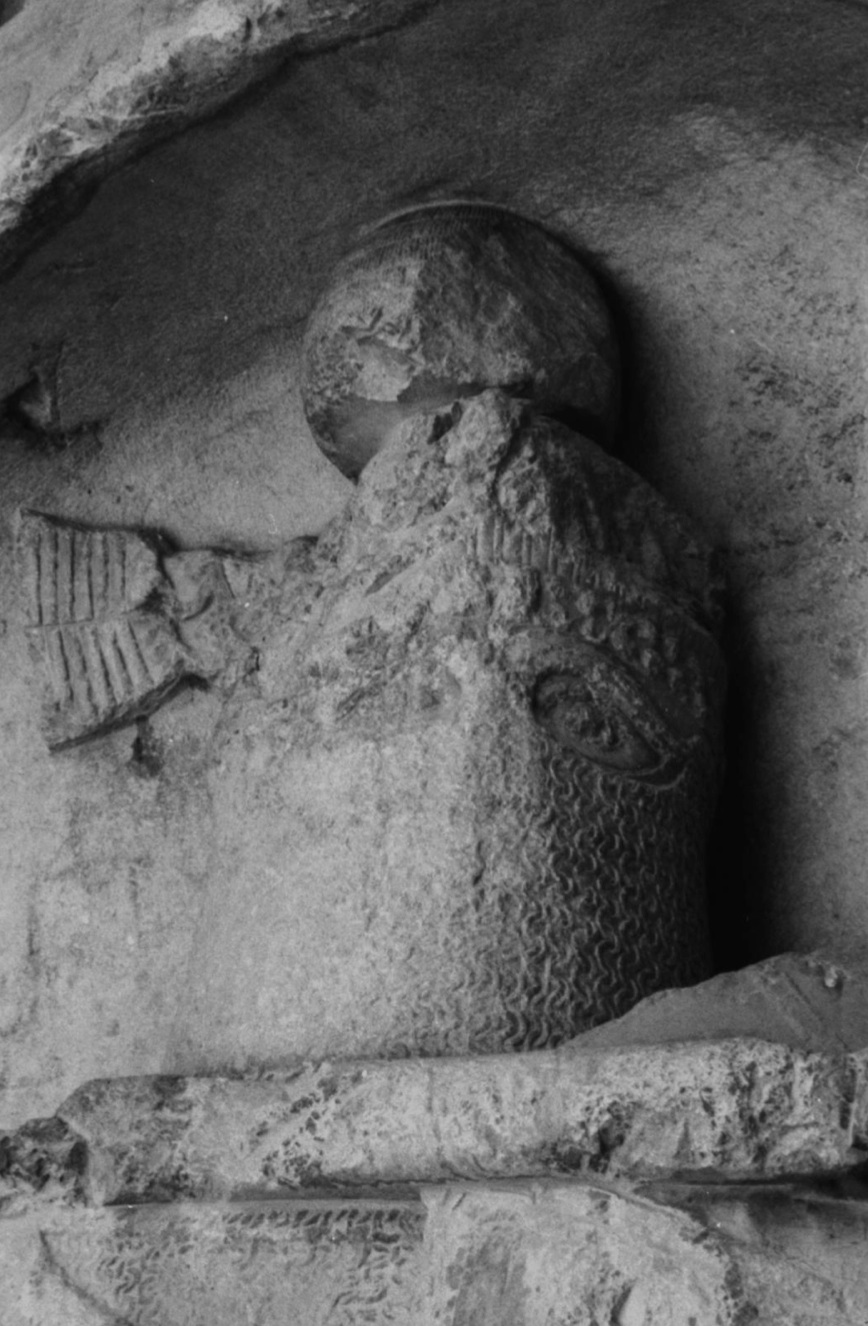
Rock-cut statue of a late Sasanian ruler, possibly of Khosrow “Parveez” II (6th century CE), In situ Ṭāq-e Bostān, (photo by Prof. David Nicolle).
The textbook’s contents are organized as follows:
= = = = = =
- List of Plates
- List of Figures and Tables
- Introduction
- Historical Timeline of the Sassanian Empire
- Chapter 1: Martial Ardour, Origins and Missions of the Spah
- Chapter 2: Organization: Military Titles and Recruitment
- Chapter 3: Military Reforms of the 6th Century CE
- Chapter 4: Military Training, Polo, the Hunt and Martial Music
- Chapter 5: Archery
- Chapter 6: The Savaran
- Chapter 7: Infantry, Auxiliary Contingents and Naval Forces
- Chapter 8: Preparations for War
- Chapter 9: Tactics and Strategies along the Roman and Caucasian Frontiers
- Chapter 10: Logistics and Support
- Chapter 11: Post-Battle Scenarios and War Diplomacy
- Chapter 12: The Spah in Central Asian: Warfare, Military Developments and Tactics
- Chapter 13: Military Architecture
- Chapter 14: Siege Operations
- Chapter 15: Sassanian Military Culture
- Chapter 16: Military Weaknesses of the Spah
- Chapter 17: The Fall of the Spah and the Empire
- Chapter 18: Post-Sassanian Resistance and Rebellion against the Caliphate
- Chapter 19: Legacy
- Maps
- Notes
- References
- Index
= = = = =
Various topics of the book (combat units and organization of the Sassanian army) were expostulated by Kaveh Farrokh in a major presentation at the Tenth Annual ASMEA (Association for the Study of the Middle East and Africa) entitled “The Middle East and Africa: Assessing the Regions Ten Years On” on October 19-21, 2017 in Washington, D.C. Elliott Abrams, senior fellow for Middle Eastern studies at the Council on Foreign Relations, delivered the keynote address at the Tenth Annual ASMEA Conference.
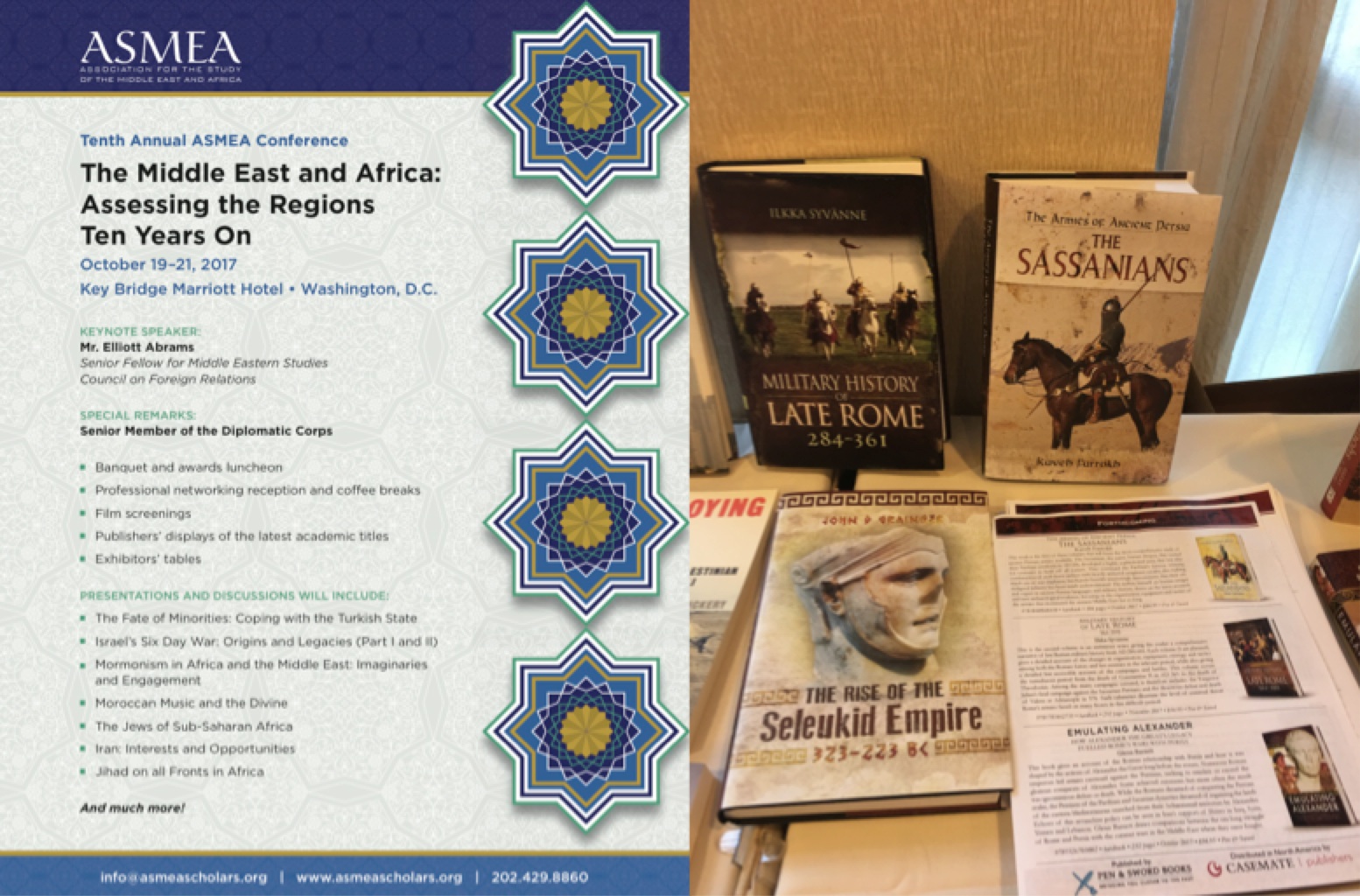
(Right) Textbook by Kaveh Farrokh on the Sassanian Army published in late October 2017 on display by the LSS at the ASMEA Conference on October 19-21, 2017 – note that at the LSS display, to the left of the Sassanians text is displayed Dr. Ilkka Syanne’s new textbook, Military History of Late Rome (284-361); (Left) Cover page of 2017 ASMEA Conference brochure.

